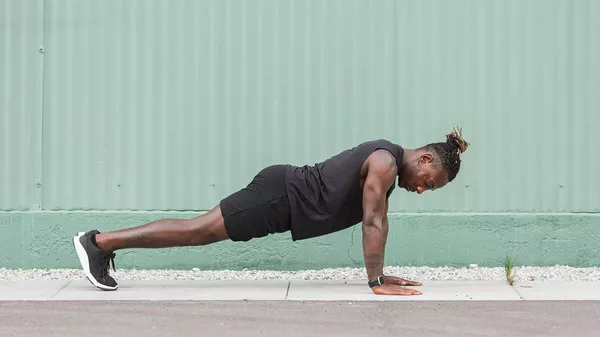Imagine sculpting your body, building strength, and burning fat—all without stressing your joints or breaking a heavy sweat. That’s the beauty of pool workouts. Whether you’re a seasoned athlete, someone recovering from injury, or just looking for a fun and refreshing way to stay active, exercising in the water offers unmatched benefits. The pool isn’t just for swimming laps; it’s a full-body fitness zone that challenges your muscles while protecting your joints.
Water provides natural resistance—about 12 times greater than air—which means every movement you make engages more muscles. At the same time, the buoyancy of water reduces impact on your bones and joints, making pool workouts ideal for people of all ages and fitness levels. From cardio to strength training to flexibility exercises, the pool can deliver a complete workout experience in one low-impact, high-resistance environment.
Why Choose Pool Workouts Over the Gym?
Working out in the pool has distinct advantages compared to traditional gym routines. First, water cushions your body, allowing you to push harder without risking injury. You can perform high-intensity moves like jumping, kicking, or sprinting without putting strain on your knees or spine. This makes aquatic exercise a great choice for people with arthritis, chronic pain, or past injuries.
Secondly, the water keeps your body temperature regulated. No more overheating, dripping sweat, or waiting for a fan to cool you off. Pool workouts feel refreshing, especially in warmer climates. The resistance from the water also activates multiple muscle groups simultaneously. Even simple movements become more challenging—and more effective—when performed underwater. Add to that the calming effect of water, and you get a workout that’s not just physically powerful, but mentally soothing too.
Getting Started: What You Need Before You Dive In
Before jumping into pool workouts, it helps to be prepared. You don’t need fancy equipment to get started—just a swimsuit, a water bottle, and a towel. But to enhance your workouts, consider adding tools like foam dumbbells, water noodles, or aqua gloves. These accessories increase resistance and help you target specific muscle groups more effectively.
Always warm up before your workout, even in the pool. Begin with light movements like walking across the shallow end or gently treading water. This increases blood flow, wakes up your muscles, and prepares your body for more intense exercises. Also, remember to stay hydrated. Just because you’re surrounded by water doesn’t mean you’re not sweating. Drink water before, during, and after your pool session to avoid dehydration.
Cardio Moves to Boost Heart Health in the Pool
Cardio is the heart of any great workout routine, and the pool is a surprisingly effective place to raise your heart rate. Start with water jogging. In chest-deep water, jog from one side of the pool to the other. Lift your knees high and pump your arms for maximum effect. The water provides resistance, making your muscles work harder, while the impact on your joints is minimized.
Another excellent cardio move is the jumping jack. Stand in waist- or chest-deep water and jump your legs out while raising your arms overhead. The water slows down the movement, creating constant tension in your limbs. For a higher challenge, try treading water in the deep end for 1–2 minutes at a time. This engages your entire body, especially your core and legs, and gets your heart pumping fast.
Strength Training Without Weights
One of the most powerful benefits of pool workouts is that you can build muscle without lifting weights. The water’s resistance acts like an invisible weight machine. Try water push-ups against the pool wall. Place your hands shoulder-width apart on the edge and push your body up and down, engaging your arms, chest, and shoulders. Because you’re in the water, the movement is safer for your joints yet still effective.
For lower body strength, perform squats in chest-deep water. Stand with feet shoulder-width apart, bend your knees, and lower your body as if sitting in a chair. The water will push against your movements, engaging your thighs, hamstrings, and glutes. Do three sets of 15 reps to build muscle endurance. You can also use foam dumbbells or resistance gloves for arm curls, chest presses, and triceps extensions.
Core Workouts That Make a Splash
Training your core in the pool offers a new kind of challenge. The instability of water forces your abdominals to stay engaged, even during basic movements. Try a simple flutter kick. Hold onto the side of the pool and extend your body horizontally. Flutter your legs up and down, keeping your core tight. This tones your lower abs, hips, and thighs.
Another powerful move is the bicycle. In chest-deep water, lean back slightly and lift both legs, pedaling them in a circular motion as if riding a bike. Keep your core engaged to maintain balance. You can also do leg lifts by holding onto the wall and raising your legs straight up and down. These exercises tone the lower abs and improve hip flexibility.
Flexibility and Recovery in the Pool
After intense cardio or strength training, the pool is a perfect place to stretch and recover. Water relaxes the muscles, improves circulation, and reduces inflammation. Use the side of the pool for support and perform gentle stretches for your hamstrings, quads, calves, and arms. You’ll find that your range of motion increases in water, allowing for deeper, safer stretching.
Yoga-inspired moves also work well in the pool. Try a standing warrior pose with one leg extended behind you and arms stretched overhead. The water helps stabilize your body, making balance easier to achieve. For back and shoulder relief, float on your back and extend your arms and legs in a star shape. Breathe deeply and let your body relax into the water.
Pool Workout Routine for Beginners
If you’re new to water workouts, a balanced routine includes cardio, strength, and core exercises. Start with a five-minute warm-up walk across the pool. Follow with five minutes of water jogging. Then, do three sets of water squats, push-ups, and arm curls. Add a two-minute flutter kick or bicycle to target your core. Finish with stretching and floating exercises for recovery.
This routine takes 30 to 45 minutes and can be done three to four times per week. As your endurance improves, increase your time and add variations like jumping lunges, lateral arm raises, or high-knee sprints in the water. The pool provides endless possibilities for creativity and progression, so you’ll never feel bored.
Advanced Pool Workouts for Serious Burn
For those who want a more intense challenge, high-intensity interval training (HIIT) in the water is incredibly effective. Alternate between 30 seconds of high-energy movements like jumping jacks, tuck jumps, or power kicks, and 30 seconds of slower recovery movements like walking or gentle sculling. Repeat this cycle for 20–30 minutes.
You can also simulate circuit training in the pool. Set up different stations around the perimeter: squats on one side, push-ups on another, jumping jacks in the center, and treading water at the deep end. Move from one station to the next with minimal rest. This keeps your heart rate elevated while building full-body strength and stamina.
Who Can Benefit from Pool Workouts?
Pool workouts are suitable for almost everyone. They’re especially beneficial for older adults, pregnant women, and individuals recovering from surgery or injury. The water’s support reduces pain and enhances movement without risk of falling or strain. For athletes, aquatic training can improve performance by strengthening stabilizing muscles and improving cardiovascular endurance.
People with arthritis or fibromyalgia often find relief in the water, where stiffness and inflammation are reduced. Even beginners who are intimidated by the gym may find the pool to be a more welcoming and enjoyable environment. Because you don’t need fancy gear or prior training, aquatic fitness offers an accessible path to better health.
Final Thoughts
Pool workouts offer a powerful, low-impact, full-body fitness solution that’s as effective as it is refreshing. From cardio to strength training, from core work to flexibility, the water provides a dynamic environment that challenges your muscles while protecting your joints. Whether you’re aiming to slim down, tone up, or simply stay active without pain, the pool is an excellent place to start.
There’s something therapeutic about moving in water—the feeling of weightlessness, the cool resistance, and the gentle support all combine to create a workout experience like no other. So next time you see a pool, don’t just dip your toes. Dive in, move with purpose, and let the water carry you toward your healthiest self.
Related Topics


































